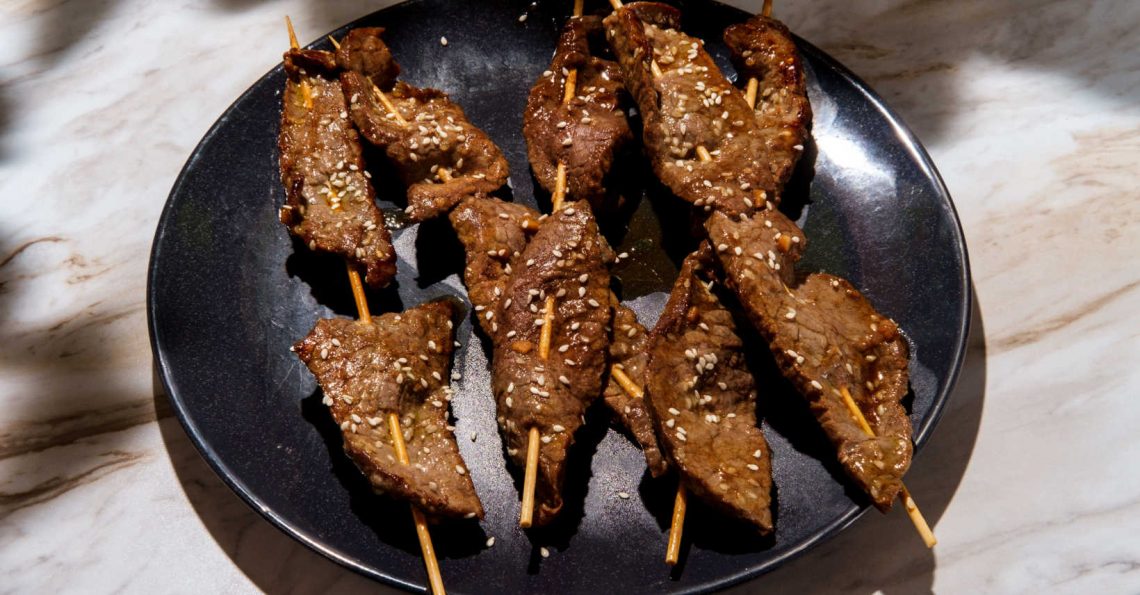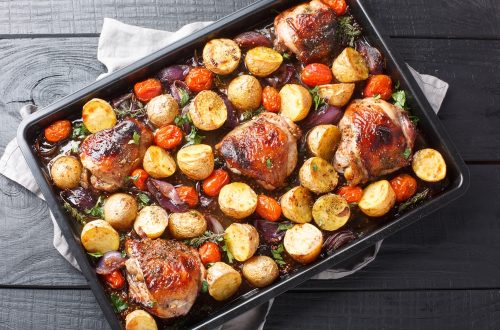
Treating Cheap Cuts with Tenderness on the Grill
From your email, please click on the title to view the photos and comment online.
The good news is that it’s grilling season. The less favorable news is that meat, especially beef, is getting expensive. Blame the drought, high feed costs, smaller herds. While it may be tempting to reach for a steak, how about investigating some less expensive cuts of meat?
To make them tender, you’ll need to turn your grill into a barbecue – essentially making it into an oven to cook those large or fatty cuts of meat without burning them. The long, slow, low, indirect heat method is perfect to render the fats and connective tissues in these tough meats into a pull-apart, melt-in-your-mouth taste sensation. It works well for everything from brisket and ribs to chicken thighs and pork roasts. Plus, you’ll get the charcoal/smoke flavor.
Instead of putting your meat directly over the fiery coals, arrange a fire at the side of your grill that will allow you to maintain a heat of 225 to 250 degrees F. for a long period. Your fire will also benefit from some wood or wood chips instead of the usual charcoal. You can also build that fire around the edge of the grill and put your meat in the center. That’s especially useful if you’re doing a whole chicken, turkey, a large pork roast, or even a brisket. (If you’re using a gas grill, keep the heat at around 250 degrees F.)
Beef on the farm
I admit to being spoiled growing up. When you’re fattening up to a couple hundred prime beef cattle, and you know that one of them will end up in your freezer, you also know that you’ll have excellent beef for grilling during the summer: prime steaks and occasionally some burgers. But, for the most part, we had T-bones from the freezer. Yes, we ate those lesser cuts because we didn’t want to waste good beef, but that was low and slow on the stove or in the oven.
Nowadays, though, we’ve actually developed a liking for those less-expensive cuts of meat – ribs, flank and skirt steaks, tenderloin steak tips, and beef chuck. When it comes to poultry, I prefer chicken thighs to legs or chicken breasts, as the thighs have more fat and have flavor when grilled. As for pork, a good pork shoulder or especially a pork butt are great for long, slow roasting – sometimes five or six hours. I do have the benefit of a barbecue smoker with a separate firebox. I let the meat sit for a good two to four hours marinade with some acid in it (lime or lemon juice or vinegar), combined with some cooking oil and herbs and spices. That not only tenderizes the cuts, but lends flavor.
International inspirations
If you’re willing to go beyond the easy temptation just to slather on some store-made sauce, why not take advantage of some international methods? Some cultures have perfected the use of these tough cuts. Oaxacan-style carne asada, for example, is a good way to make a fine meal of a flank or chuck steak that’s been marinated and then grilled. Serve it with some peppers, chopped onions, salsa, and guacamole in a tortilla. Argentine matambre makes a showy meal from a marinated flank or skirt steak stuffed with chopped peppers, garlic, and herbs and spices.
If you prefer steak tips, how about a Korean bul kogi? (Pictured above.) The steak tips are wrapped in a thin lettuce leaf and dipped in a soy-based dipping sauce. Or you could do a Russian shashlik, grilling the cubed and marinated beef tips as kebabs with onions and peppers. Nigerians grill “stick meat,” or suya, in which cubed beef is marinated for hours in a peppery mix. It’s common street food served with onions, tomatoes, cilantro, lettuce, and lime juice.
The Vietnamese grill strips of lemongrass-marinated beef and serve them with a lettuce leaf, dipped in a peanut sauce. And as for ribs, how about Korean kalbi short ribs? These well-marinated morsels are typically served in lettuce leaves with rice, some garlic slices, and gochujang, that spicy Korean red pepper sauce.
In other words, If you’re willing to spare the time, you could save some money while trying some fun new grilling recipes.
Please click on the headline to view the blog on the website. You can log in and comment at the end of the blog to share your thoughts and start a discussion, or suggest a topic for Farmboy in the Kitchen.
If you’d like to share the blog, click on the Facebook icon or one of the others. Thanks!




